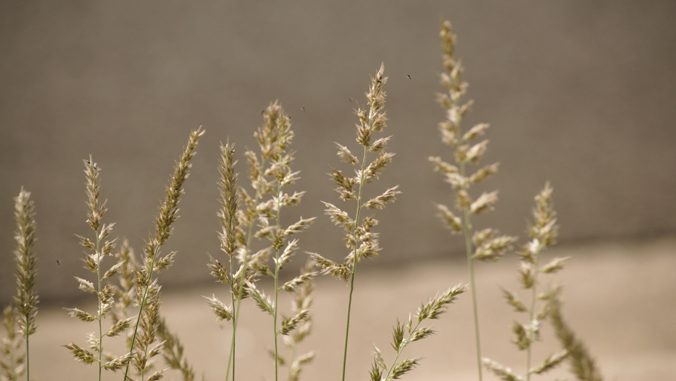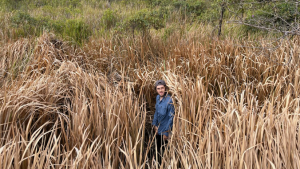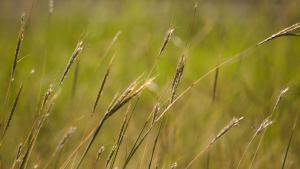
New species of flammable invasive grasses have been discovered and identified across most Hawaiian islands by a University of Hawaiʻi at Mānoa School of Life Sciences PhD student.
Kevin Faccenda discovered 34 invasive and/or weedy species never before reported in Hawaiʻi during more than 50 days of fieldwork conducted across Kauaʻi, Oʻahu, Maui, Molokaʻi and Hawaiʻi Island over the past year. Six of these species have never been found outside of their native range before, making Hawaiʻi the first place worldwide to experience naturalizations by these species. Faccenda says controlling the spread of these grass species and others is critical to avoid future wildfires, like the one that devastated Lahaina on August 8.

“If we can react to new fire-promoting species of grasses and contain or eradicate them before they become widespread across the landscape, we can reduce ecosystem flammability and therefore the impacts of wildland fire across the islands,” Faccenda said. “If we don’t know the names and areas where fire-promoting species grow across the landscape, how can we manage them?”
Three invasive grass species were discovered in the Lahaina area during Faccenda’s fieldwork before the August 8 fire that destroyed the historic town. Fortunately, none of them are considered to pose high wildfire risk, and according to Faccenda, it is unlikely they added to the dry brush that helped spread the deadly wildfire which was mostly composed of two African pasture grasses, buffel and guinea grasses, which are the dominant grasses seen on dry, leeward hillsides today.
At least two of the newly reported grass species are considered highly flammable and have been discovered at multiple sites across the state. The most flammable, Faccenda said, is a grass from Africa or India, Enneapogon cenchroides, which was found in Mākaha on Oʻahu. Faccenda found this plant with the assistance of Professor Michael Ross from Kapiʻolani Community College and reported seeing more than 500 plants largely confined to infrequently mowed areas along the roadside. However, based on this behavior of growing from shallow and rocky soils, Faccenda said it is likely that this grass will spread up the ridge separating Mākaha and Mākua-Keaʻau valleys and potentially exacerbate the flammability of this already dry area.

The second highly flammable species, Bothriochloa macra, was found on Niʻihau, Oʻahu, Molokaʻi, Maui, Kahoʻolawe and Hawaiʻi Island from 15 meters to 1,300-meter elevation. Based on preserved samples stored at Bishop Museum, this species has been present in Hawaiʻi since 1936, but had been misidentified by Hawaiian botanists until now. Faccenda said that this Australian grass has previously only been recorded as naturalized in New Zealand, but little information could be found regarding its weed potential or ecology. In Australia, it is associated with disturbance in grassy woodlands, can handle drought and thrives on low fertility soils.
In addition to the invasive grasses, Faccenda found several agricultural weeds that are harmful to agricultural crops, natural habitats or ecosystems, and humans or livestock including one federal noxious weed, a species of African crabgrass. These species have been reported to the Hawaiʻi Department of Agriculture as well as to the invasive species committees on each island.
Faccenda’s research was funded in part by the Department of the Interior Pacific Islands Climate Adaptation Science Center. Faccenda is mentored by School of Life Sciences Professor Curtis Daehler.
View Faccenda’s entire research paper.
—By Marc Arakaki

